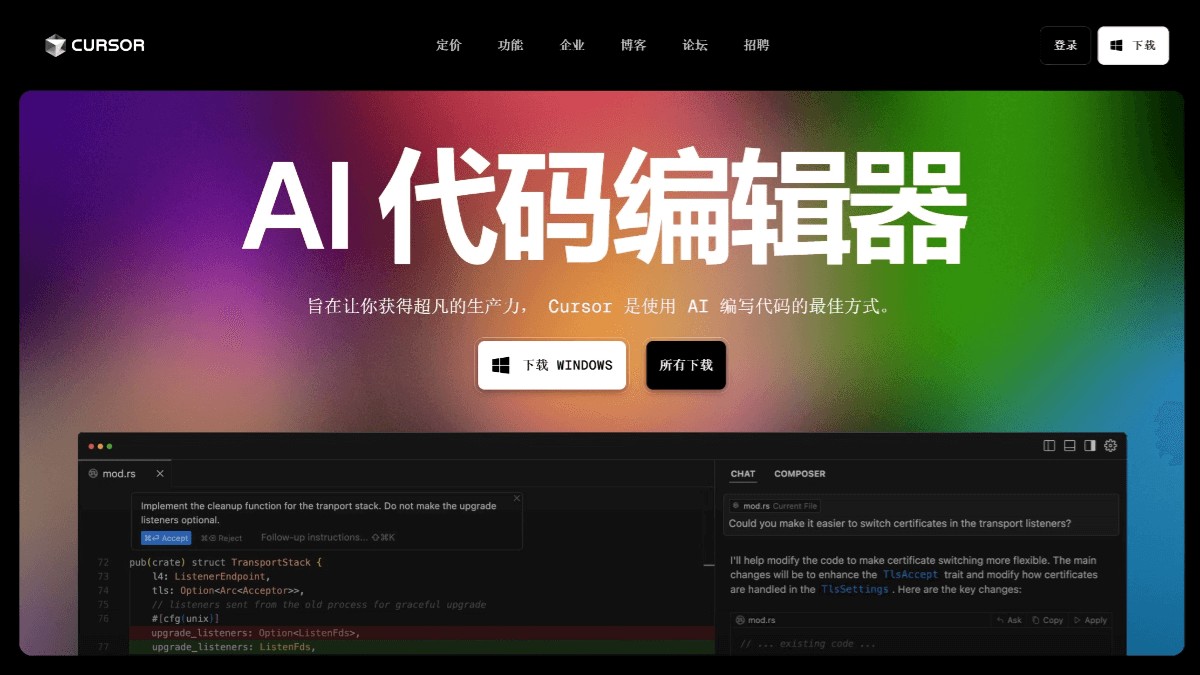
Artificial intelligence (AI) is gradually penetrating into the field of education, especially primary and secondary education, changing the traditional education model through personalized learning, intelligent tutoring, education management and other methods.
The following are some specific solutions for the application of artificial intelligence in primary and secondary education.
AI can customize personalized learning plans based on each student's learning progress and abilities, helping students learn more efficiently.
Intelligent learning platform : Through the adaptive learning system, AI automatically adjusts learning content and recommends exercises and courses suitable for students.
AI tutoring system : Applications such as Duolingo use AI to provide students with personalized learning suggestions and instant feedback.
Advantages : Meet individual differences among students, provide real-time feedback, and enhance learning interest.
AI helps teachers manage classes and evaluate student performance more efficiently, reducing their workload.
Automatically correct assignments : The AI system automatically corrects multiple-choice and fill-in-the-blank questions and analyzes students’ common mistakes.
Emotion and attention analysis : AI uses facial recognition technology to help teachers monitor students’ emotions and classroom participation.
Advantages : Improve classroom management efficiency and adjust teaching strategies in a timely manner.
AI virtual teachers and counselors can provide real-time Q&A and personalized tutoring, especially supporting students after class.
Intelligent question-answering assistants : AI assistants such as Siri can quickly answer students' questions and help complete homework.
Language learning assistance : AI speech recognition technology helps students practice pronunciation and language skills.
Advantages : Available at any time to solve students’ questions after class.
AI provides real-time assessment and feedback to help teachers better understand students’ learning progress.
Automated exam scoring : AI can correct subjective questions and give scores.
Learning report analysis : By analyzing student data, AI generates reports to help teachers discover students’ learning strengths and weaknesses.
Advantages : Improved scoring accuracy and real-time feedback to help students improve in a timely manner.
AI provides personalized support to students with special needs to help them overcome learning difficulties.
Speech Assistive Technology : Provides real-time captioning or transcription services for students with hearing or speech impairments.
Personalized learning system : For students with autism or attention deficit disorder, AI provides learning content and pace suitable for them.
Advantages : Provide customized support and improve educational equity.
AI can analyze student data and help education managers make scientific decisions.
Student performance analysis : AI analyzes student performance, attendance and other data to predict students' learning progress or potential problems.
Educational quality assessment : AI helps evaluate teaching effectiveness and course content, and provides improvement suggestions.
Advantages : Make decisions based on data and take timely intervention measures.
AR/VR applications combined with AI technology provide a more intuitive and interactive learning experience.
Virtual laboratory : Students conduct chemistry and physics experiments through VR, and AI provides real-time feedback.
Immersive history and geography learning : Students visit historical sites or take virtual tours through VR, and AI recommends learning content based on interests.
Advantages : Improve students' learning interest and participation, and deepen their understanding of knowledge.
AI can help teachers improve teaching quality and provide personalized training suggestions.
Personalized teacher training : AI analyzes teachers’ teaching data and recommends improvement methods and courses.
Teaching content recommendation : AI recommends appropriate teaching resources based on teaching needs.
Advantages : Improve teachers’ professional capabilities and improve teaching effectiveness.
The application of AI in primary and secondary education is helping students personalize learning, provide instant feedback, and support teachers to efficiently manage classrooms and improve teaching quality. With the support of AI technology, education can be more personalized, flexible and efficient, thereby bringing better experiences and results to students and educators.



